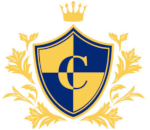Previously, education in Thailand was provided by Buddhist monks and was only available to boys. Nowadays however, the Thai government provides education in Thailand.
There are two types of education in Thailand – formal and informal education. Formal education is the education that children receive in a classroom. Informal education however, is provided outside the classroom (in libraries, museums, through educational TV programmes and special radio programs etc.). However in Thailand today, most students have access to a formal education system.
Formal education in Thailand is divided into early year education, basic education, vocational education and higher education.
Basic education in Thailand is divided into:
- Nursery school KG1 to KG3 for 3 to 6 year olds
- Primary school P1 to P6 (Prathorn) for 6 to11 year olds
- Secondary school M1 – M6 (Mattayorn) for 12 to18 year olds
Compulsory education in Thailand consists of 6 years of primary schooling called Prathorn (level P1 to P6) and 3 years of secondary schooling (level M1-M3).
Optional secondary education and university
Students who want to continue their studies after the obligatory M3 level will have to pass the O-NET test (Ordinary National Educational Test). They then have to choose one or two elective courses. The elective courses consist of science programmes, mathematics programmes, foreign language programmes, or social science programmes.
In order to graduate after M6, students must pass the A-NET test (Advanced National Educational Test). The M6 diploma is equivalent to British A levels, the International Baccalaureate or the US- high school diploma.
In order to attend a university after graduating from M6, students must pass the CUAS test (Central University Admission System). This system is based on the scores of the O-NET and the A-NET. In addition they have to pass an extra admission test at their respective universities. Almost 40% of students attend university after M6 (Mattayorn).
Schooling hours and school holidays in Thailand
Public schools usually sing the National Anthem at 08:30, which indicates the start of the school day. Classes usually end around 15:30. International schools may have different schedules; this depends on the school.
Public schools usually have one month of holiday in October and two months of holiday in March and April.
Private international schools tend to have different holiday schedules. They are more likely to follow the Western schedule and have long holidays in July and August and a two week holiday for both Christmas and Easter.
The Grading System in Thailand
In Thailand, primary and secondary school students will be graded using a number-system (1 = very bad to 4 = very good). Some English teaching programmes and individual English teachers use the American grading system with A (being excellent), B, C, D and F (failed).


